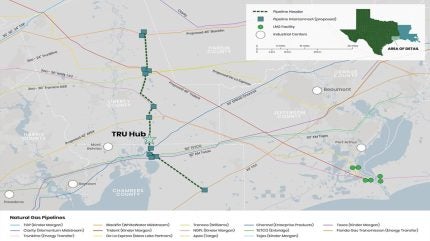
NeuVentus, an Austin, Texas-based energy infrastructure developer, has received a final order from the Railroad Commission of Texas for the storage of gases and liquids.
This order grants a NeuVentus subsidiary the authority to create and operate 12 salt caverns for storing gases and liquids including natural gas, hydrogen and natural gas liquids at the Texas Reliability Underground Hub (TRU Hub) in Liberty County.
The TRU Hub, situated at the Moss Bluff salt dome in southern Liberty County, is a greenfield salt cavern storage facility.
The development includes 12 permitted salt cavern wellbore locations, solution-mining equipment and interconnecting pipelines.
NeuVentus plans to begin marketing efforts and engage with potential customers for the TRU Hub soon.
NeuVentus CEO Sam Porter said: “We are facing a defining moment in the North American energy system and particularly in natural gas infrastructure.
“TRU Hub’s prime location and excellent interconnectivity in the heart of the Gulf Coast, combined with the inherent flexibility of high-turn salt cavern storage, position TRU Hub exceptionally well to meet the moment and ensure that LNG [liquefied natural gas], power, datacentre, industrial and petrochemical demand growth does not come at the expense of reliability.”
The Railroad Commission of Texas’ final order allows for eight gas caverns under Texas Statewide Rule 97 and four liquids caverns under Texas Statewide Rule 95.
The TRU Hub’s 12 caverns offer a potential total working capacity of up to 96 billion cubic feet (bcf) of natural gas, 100,000 tonnes (t) of hydrogen and 128 million barrels (mbbl) of natural gas liquids.
The initial development phase will feature two natural gas caverns, each permitted for up to 14mbbl of cavern volume, equating to approximately 10bcf of working capacity per cavern, or 20bcf in total.
Each cavern will have an initial permitted maximum injection rate of approximately 2.5bcf per day.
The initial phase of the TRU Hub also includes a large-diameter natural gas pipeline header with interconnectivity to up to 12 natural gas pipelines including major interstate and Texas intrastate transmission arteries.



